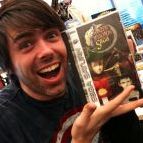GamesRadar: In your opinion, which classic Mega Man game has the best assortment of robot bosses?
Inafune: Again, that will be Mega Man 2. In Mega Man 2, a set of 8 bosses were introduced, and the Mega Man style was established. We also launched a campaign encouraging the users to design bosses and adopting their ideas into the product. We were able to carry the style adopted in Mega Man 2 from then on, and that’s an indication of how well balanced the designs were.
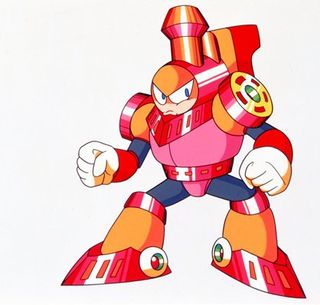
GamesRadar: There's got to be one that you consider really lame, right? Charge Man or Centaur Man, perhaps?
Inafune: Honestly, there are some designs that make me scream, “What the hell is that?” But whether or not the design is “cool” does not really hold weight for me. What’s important in my character design is not “coolness” but “appeal” or ability to catch people’s attention.
Truly, Charge Man and Centaur Man are very eccentric and may not be cool in general view, but the eccentricity helps them to have an impact on the viewers. In this sense, lameness is not really an issue.
GamesRadar: Conversely, is there one robot you really love, that really stuck with you through the years? We've got a special place tucked away for Magnet Man.
Inafune: Wow, Magnet Man!? I’d love to hear the reason for that! Please!
For me, that will be Elec Man. It’s because he’s the first robot I ever designed. He holds a special place in my heart and stirs up a mixture of emotions. There are some parts of the design I absolutely love and other parts that I regret. He also brings back my excitement I felt when I created him.
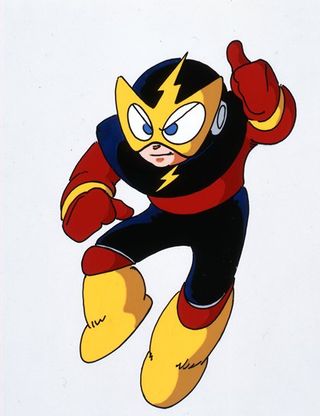
GamesRadar: What's your thought process while creating new enemy designs? You've crafted some extremely memorable robots in the NES titles.
Inafune: You may find it unexpected, but back when we were developing NES titles, we first designed pixel graphic characters in a game, and designed details based on the pixel graphics. The reason behind it is that NES system didn’t allow a seamless conversion of detailed designs to pixel graphics. Pixels were too cluttered, and some didn’t appear as expected. Even when we finally managed to pull it through after many struggles, the outcome was far different from the designs. Because of this, it was best to first design robots in pixel graphics which would look interesting on the NES, and then narrow down the details highlighting the characteristics of the pixel graphic characters. This process in the end helped us to create special robots that vividly live both in the game and the users’ mind.
GamesRadar: Has that process changed at all after all these years, coming back to the franchise in 2008?
Inafune: The basics of the design process have not changed. We still worked on pixel graphics first. Though we intentionally tried to simplify overall designs in shape and color, we still first designed pixel graphics in order to optimize the robots’ lively movements. Having said that though, this is not strictly true for all the characters. Especially in designing bosses, it was easier to anticipate the amount of simplification that was required, so that we were able to design the look of the characters first.
GamesRadar: We've noticed most robots designed by Japanese developers tend to be sleek, angular and clean, whereas Western robots have a lot of extra edges and tend to be grittier and rugged (compare Lost Planet to Gears of War, or classic Transformers to Hollywood Transformers). Do you have any thoughts on this?
Inafune: Either style works for me. The Hollywood Transformers design is something that the Japanese never could have come up with. The Hollywood version appears to be refreshing and cool. In the same way, I hope Japanese robots will be loved in the West.
I find value from different views, and it will be very nice if a different type of design born out of a cross cultural aspect could be appreciated for its own uniqueness. In this sense, if there was a Hollywood Mega Man, it would be similarly rugged. That, though, may not be acceptable...!
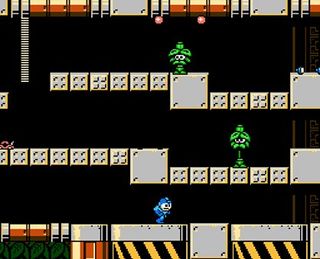
GamesRadar: Is there any chance you're looking at ways to revive the franchise on consoles with a totally new iteration of Mega Man?
Inafune: I always welcome challenges, and I would love to dive in at every opportunity. There are many Capcom franchises that may be suitable for revivals. As long as fan demand is strong, I would like to actively follow those directions.
GamesRadar: There have been several classic franchises reborn over the past few years (Rygar, Ninja Gaiden, Bionic Commando etc) - do any of these, in your opinion, match the quality or approachability of the original titles? What's the most important thing these remakes should try to accomplish?
Inafune: What I think is most important in a remake project is staff members’ passion for the particular classic franchise. It will be very beneficial if a developer in the team had an experience of forgetting himself in playing the game and his love for the game still remains deep. If such developers get involved in a remake, they’ll be able to incorporate elements which made them fall in love with it as well as find a balance between elements for the classic lovers and new users. For example, we are remaking Bionic Commando with a group of fans of the classic franchise, and the result of their passion is highly anticipated.
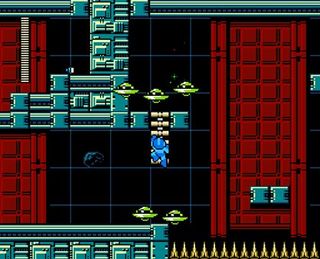
GamesRadar: Have you kept up with all the fan sites and elaborate Mega Man remixes on the web? Seen anything that's caught your eye?
Inafune: I do check the sites, occasionally. I am surprised by some of the superhuman plays that I can never follow, and have fun with Mega Man fan music. Especially, “Can’t beat Air Man” and “okkusenman”was highly popularized in Japan, and I too am well aware of them. Those remind me of how much Mega Man is loved and I am very pleased about that.
GamesRadar: Mega Man 9 seems like pure fan service - is this your primary goal, to please the dedicated fans or will there be something that attracts new players despite the "9" at the end of the title?
Inafune: Sure, fan service for those who have waited for the new title for a decade is one of our primary goals. At the same time, we also simply wanted to make it.
Game development nowadays is done as a very large project, and the scale makes it harder for creators to optimize their abilities and potentials. When I first developed Mega Man, the team was only 6 people. The project was short-handed in one way, but that also helped each of us get involved in every detail. It was so much fun. It might have been the best time for the creators.
The newest installment cannot be managed by 6 creators, but we are leading the project with a small team relative to modern development. Each one of the members is fully involved in every aspect of game development, and the efforts are about to bear the fruit of a solid and interesting product. The aura of excitement around the classic title is coming back. The result will certainly meet the expectations of the fans that have long waited for it. I hope their passion will spark a fire in new generations.
Jul 3, 2008
